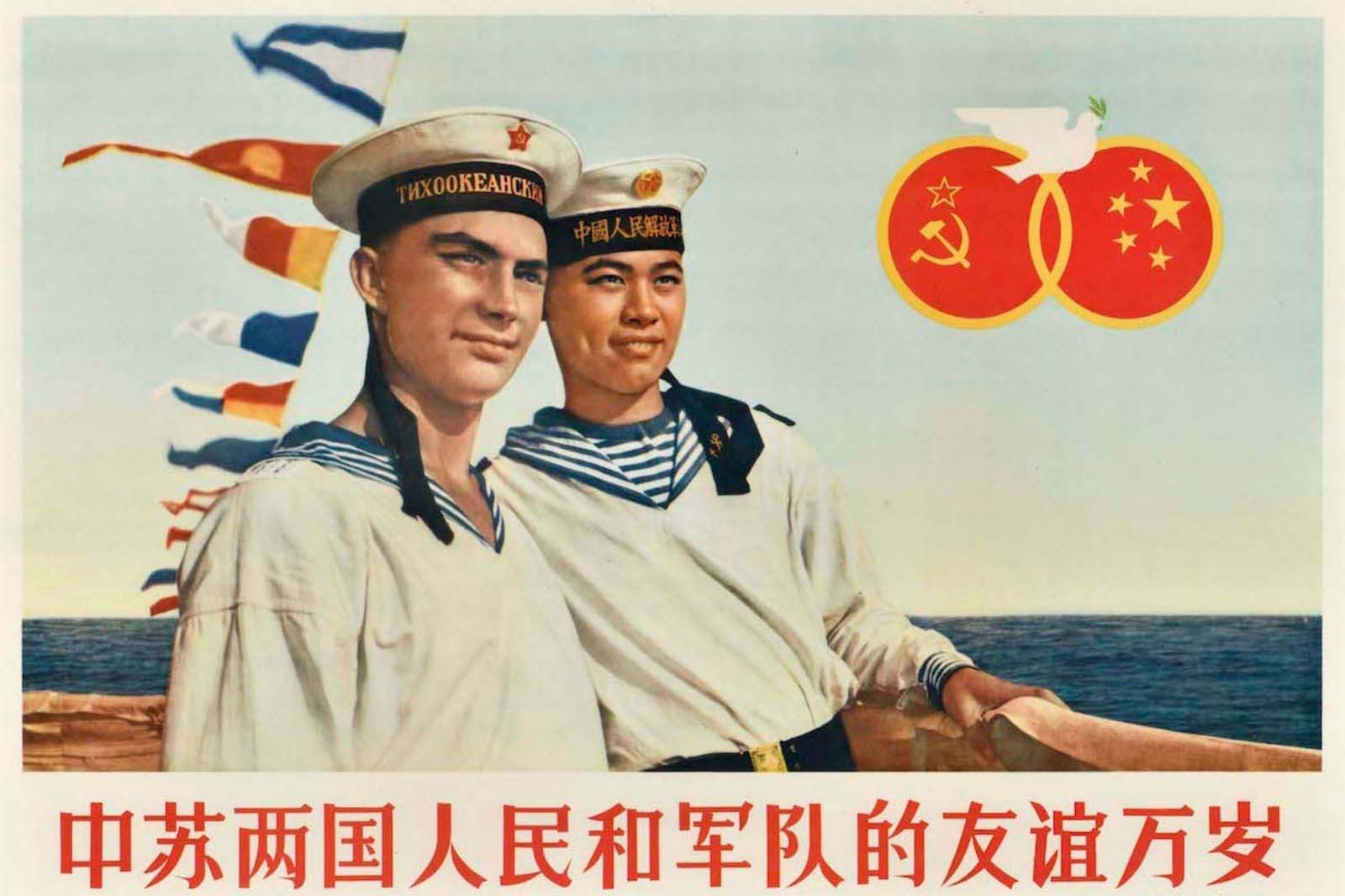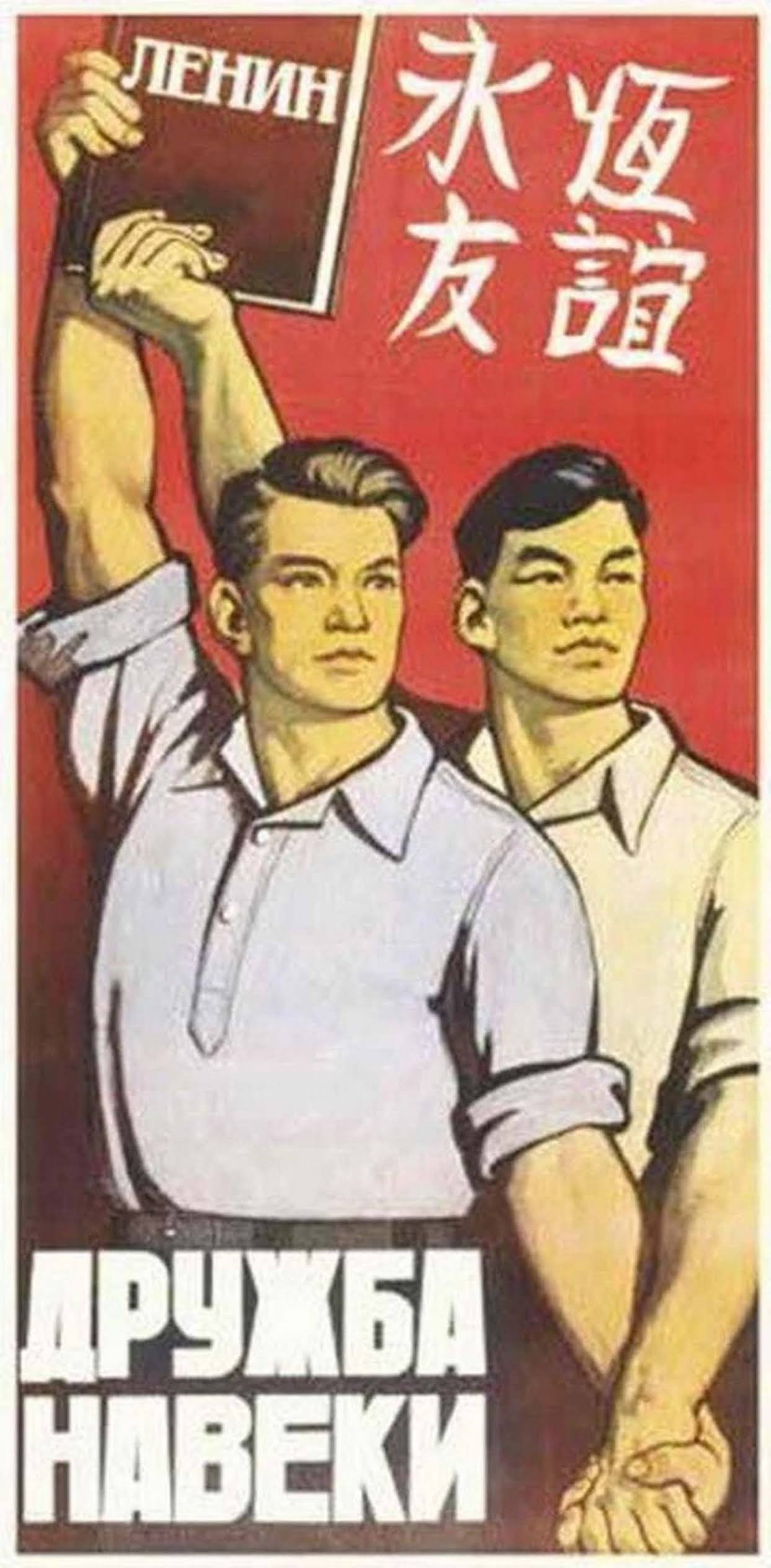The unintentionally homoerotic Chinese-Soviet communist propaganda posters, 1950-1960

In October 1949, the Communist Party of China led by Mao Zedong claimed victory and formed the People's Republic of China. Governing a combined population of about 800 million people, the socialist regime was now in power in a fifth of the world.
Maintaining friendly and productive relations between Moscow and Beijing was considered vital to the survival and advancement of socialism.
In late 1949, Mao went to Moscow to meet Joseph Stalin for the first time. Recognizing the need for unity at a time of growing opposition, Stalin and Mao signed a bilateral treaty called the Treaty of Friendship, Alliance and Mutual Assistance.
Propaganda posters were an integral part of proving to the world the close relationship between China and the Soviet Union and as seen from this photographic collection, they walked hand in hand, kissing, holding each other, All are happy and gay, so to speak.

These gay Sino-Soviet communist propaganda posters look like holiday photos of a gay couple, or perhaps advertisements for interracial gay marriage.
The designers of these posters did not know how homosexual they were and later, many scholars have pointed to the direct homosexuality present in these images.
The depictions range from sweet as two men offering flowers to each other—totally inappropriate—such as men representing China and the Soviet Union kissing, holding hands, passionately hugging each other, etc.
Scholars believe that there is little evidence that the artists intentionally depicted homosexuality in these images. Most likely, the artist was tunnel-eyed to convince people within the Soviet Union and China that cooperation and closeness were necessary to survive and strengthen global socialism.

According to Angelina Lippert of Poster House, the concept of fraternity, especially between countries fighting a pre-established system of capitalism, often drove these intimate paintings, adding that when Stalin came to power, art was the only The accepted style became socialist realism. Much of this public-facing design was aimed at hearty, strong workers, pink-cheeked and clearly enjoying themselves.
Also, socialist fraternal kissing was very common at that time, and even today if you visit some countries, men still kiss on the mouth, and it is not considered a sign of homosexuality. These images would have represented two countries coming together to share the love of communism and watch their children become communists.
Both China and the Soviet Union were homophobic societies. Communist leaders and intellectuals took many different stances on LGBT rights issues. Karl Marx and Friedrich Engels said little on the subject in their published works. Marx in particular rarely commented on sexuality in general.
The Bolsheviks, who came to power during the October Revolution of 1917, had already decriminalized male homosexuality in 1922. Then, Joseph Stalin criminalized male homosexuality again in 1933–1934, which already referred to a prison sentence of up to five years with hard labor.
Finally, after the fall of the Soviet Union in 1991, Russia decriminalized homosexuality in 1993, joining the Council of Europe.




No comments: